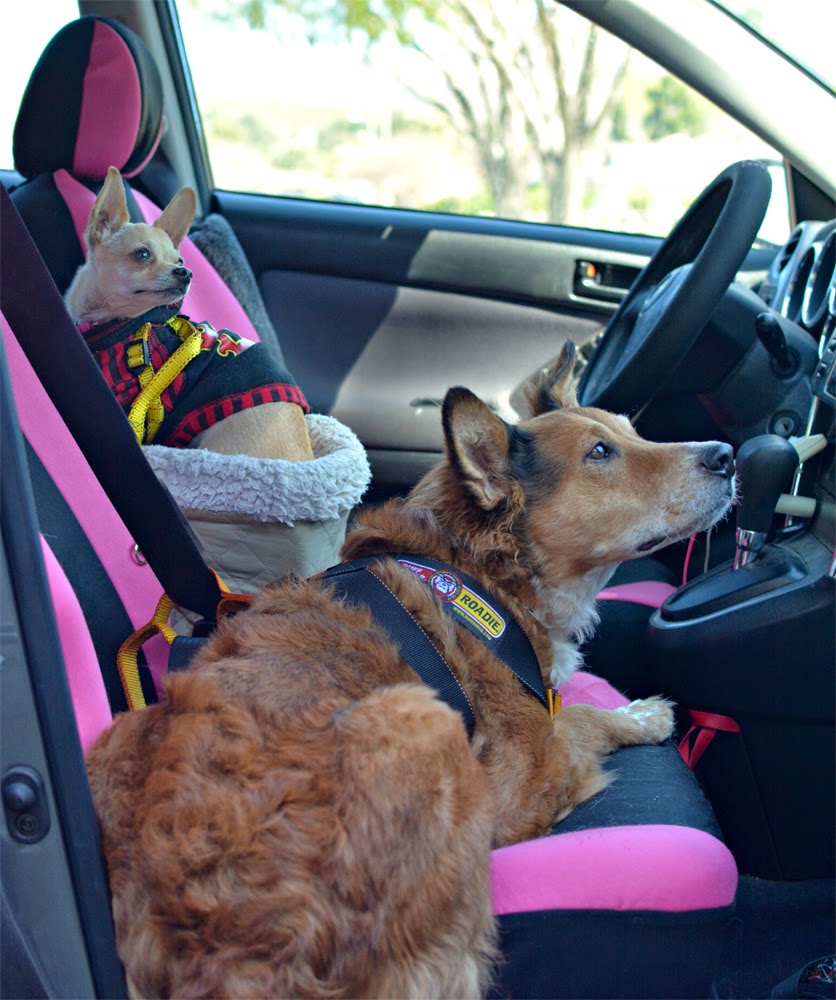Brisbane's birthday is tomorrow, and we're taking cupcakes to daycare to celebrate. These were some fairly high-effort cupcakes, but dogs are the easiest friends to cook for because they literally have no standards. To make halfway decent cookies and cakes for humans, you need at least half a dozen ingredients to achieve the correct texture and taste. Dog cookies and cakes work with two or three ingredients, and need no leavening agents or spices.
 |
| Five ingredients for fancy cupcakes. |
Ingredients
1. Something Tasty. I've used peanut butter, cheese in all forms including canned, and ground or diced meat of any sort. Leftover stew, meatloaf, or casserole works, too.
2. Something Dry. Flour, oatmeal, cornmeal, almond meal, cooked rice, cooked pasta, bread, crackers, cereal, chips.
3. Something Wet. Cooked, canned, or mashed fruit or vegetables, eggs, juice, or even water will work.
Last year's cake was made out of leftover Swedish meatballs and crushed Special K cereal. This year I decided to go all-out and make something pretty. Brisbane's birthday cupcakes (pupcakes?) are made out of ground beef, quick oats, banana, applesauce, and canned parmesan cheese.
 |
| Too crumbly, needs some wet stuff. |
I browned the ground beef because I didn't want the cupcakes to be too greasy. If I were using something less squishy, like steak or chunks of cheese, I would have chopped or shredded it, or maybe just run it through the blender or food processor. I threw in the parmesan cheese just because I saw it in a dog biscuit recipe once and thought it was neat.
Eggs and flour make a really good binder for sticking everything together in baked goods, but Brisbane is allergic to eggs, so I have to use other sticky things. I used quick oats and applesauce instead, because oats can be used as a binder in meatloaf, and applesauce helps keep everything moist.
I considered adding ground flax, baked or microwaved sweet potato, and shredded carrots to this recipe, but I was feeling lazy today. I did throw in a mushy banana because it was convenient.
 |
| The correct texture is kind of doughy. |
I didn't actually measure any of these ingredients, I just started by adding all of the ones that I had the least amount of. One banana, one pound of browned and drained ground beef, and as much parmesan cheese as I was willing to feed to the dogs. Then I poured oats and applesauce in and mixed it. Too dry and crumbly? Add more applesauce. Too wet? Add more oats.
I was shooting for a fairly dry and doughy texture, wetter would have been fine but also would have taken longer to bake. Too dry and the cupcakes might have come out crumbly. If I had wanted to make dog biscuits instead of cake, I could have made the mixture even dryer and then shaped it into flat patties and baked it on a cookie sheet.
The nice thing about this mixture is that it has nothing that I expect to expand or contract while cooking. This gives me the freedom to shape the final product before it goes in the oven.
I filled the first round of cupcake liners sparingly, the second batch would be mounded over. I originally set the oven timer for 10 minutes because I didn't think anything really epic would happen to them that quickly. When the timer beeped I tried stabbing one with a fork, which came out pretty greasy. After another ten minutes they looked a little more dry so I decided they were done.
The dog cupcakes came out slightly greasy, but not too bad at all. I frosted them with cream cheese because it looks deceptively like icing.
 |
| The waiting is the hardest part. |
I could have left these plain, but I have fun decorating them. This year I just went with regular rainbow sprinkles to make them look as much like people cupcakes as possible. Are regular sprinkles good for dogs? No. Will a dozen sprinkles on a cupcake hurt a dog? Probably not.
These are definitely major treats for my dogs. The cream cheese and beef makes them a high-calorie and fatty special-occasion food. If this were more than a once-a-year event I would probably skip the tablespoon of frosting on each cupcake.
 |
| Happy Birthday Briz! |



















































